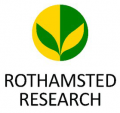Restoration of Mulloon water catchment in New South Wales (NSW), for improved landscape function and resilience to climatic extremes, spanning 23,000ha, 50kms of streams and more than 20 landholders.
Project implemented: 2006 - Ongoing
To inspire leaders in rural communities across Australia to undertake similar catchment-wide landscape rehydration works.
To help rebuild a resilient Australian landscape with enough water, soil and biodiversity to provide food and water security.
3 km of creek restored leading to increased agricultural productivity, improved water quality, water yield, and biodiversity.
Expansion of project out to catchment scale, with additional 20 landholders coming on board.
Facilitating 100 landscape rehydration projects across Australia and overseas over the next decade.
One of five model case study projects chosen by UN SDSN to help develop guidelines for sustainable but profitable and productive farming.
Increased participation from local landholders.
Greater awareness of project in mainstream media, including an episode of ABC TV’s Australian Story in October 2018.
Increased interest in our workshops and training courses and knowledge of regenerative agricultural practices.
The MCLRP aims to rebuild the Mulloon catchment’s natural landscape function and boost its resilience to climatic extremes, leading to more reliable stream flows, improved ecosystem functioning and enhanced agricultural productivity.
The project focuses on creek repair and erosion control using small interventions to slow and filter water flow, preventing further erosion and beginning to rebuild the soil.
Interventions are made of natural materials and complimented by holistic landscape management, including sustainable grazing, tackling soil erosion, fencing, tree planting, slope stabilisation and contouring.
Outcomes include boosted agricultural productivity, a healthier creek and an ecosystem capable of capturing flood sediments, recycling nutrients and providing valuable habitat for enhanced biodiversity.
The Institute involves landholders in scientific monitoring and shares its knowledge of regenerative land management via field days and creek tours, training courses, and workshops.
TMI works closely with: the Mulloon catchment landholders; the broader rural community; all levels of Government; the research and education sectors; philanthropy; NGO’s such as Soils For Life; and of course the United Nations Sustainable Development Solutions Network (UN SDSN). This builds trust amongst stakeholders and gives TMI a vital social licence to undertake catchment scale activities.





